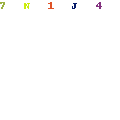Chad is a country whose territory is almost entirely desert. The Sahara, to the north, occupies more than 40% of this extension, and in the same area is the volcanic massif of Tibesti (3,265 m high).
The central region, the Sahel is a savanna, which converges on the shores of Lake Chad, located in the center of the western border. This lake covered a large part of the region in previous geological periods and today its level continues to decrease due to evaporation (up to 25 cm per month). To the northwest of Tibesti lies the sandy Ennedi plain, to the east the crystalline rock mountains of Uadaí and to the south the Ubangui plain.
Only 2% of the country’s surface is arable, and 20% is covered by vegetation.
Hydrography
The waters of Lake Chad come from two rivers, the Logone and the Chari, which flow down from the plateau that separates this basin from that of the Congo River. Chad’s river system is practically limited to the Chari, Logone rivers and their tributaries. The Chari runs a course of approximately 1,200 km and the Logone, formed by the confluence of the Mberé and Pendé rivers, runs for more than 800 km before flowing into the Chari river, near N’Djamena, the country’s capital.
The level of Lake Chad fluctuates according to the flow of the rivers that feed it and by evaporation. The lands of the Logone and Chari rivers are the richest in the country and where the largest population centers are concentrated.
Climate
Chad’s climatic differences range from a humid and tropical region in the south to a hot and arid climate in the north and central regions of the country. In the first zone, between 800 and 1,200 mm of rains fall throughout the annual cycle, especially between May and October, while in the central semi-arid zone 400 to 800 mm of rains fall from June to September. The extreme temperatures oscillate between 12 and 50ºC.
Population
Chad’s population is a mosaic made up of different ethnic groups that stands out even within the framework of the characteristic diversity of Africa. Although French and Arabic are the official languages, other languages and dialects are also spoken in the country.
The main ethnic group is the Sara, whose members represent about 25% of the population. With the Bagirmi and Bongo, they occupy the central area of the Chari and Logone river basin. The Laka and Mbun peoples live west of the Sara, while the Tangule live along the banks of the Chari and Longone rivers. The Kuri, the Buduma and the Kanemba are dedicated to agriculture and live scattered around Lake Chad.
In the north and east there are groups of Muslims. In the south and in the mountainous areas (mainly Guéra), there are groups that practice animism. The population density is low. Due to the prolonged and cyclical periods of famine in the Sahel region, internal migrations have followed one another in an uninterrupted process following a movement from the north to the fertile areas of the south. The urban population represents only 20% of the total.
Social development
The social situation of the population suffers from ethnic conflicts and the frequent changes of government that have taken place throughout the 1960s and 1980s. However, there are limited social security structures and incipient legislation in this regard, but their application and the material conditions under which they are carried out are ineffective and chaotic.
Health
Health conditions are worse than in the other West African countries. State health services are concentrated in the south of the country, and hardly exist in the north. There is an acute shortage of medical personnel.
However, the sanitary control of infectious diseases is negligible and preventive measures are null.
Education
According to andyeducation, the illiteracy rate is one of the highest in West Africa. Primary education is provided by a few public schools and by Catholic and Protestant missions. Less than half of children of primary education age go to school. In the capital there are some institutes of technical education and the University of Chad.
Capital and most important city
N’Djamena: Formerly Fort-Lamy is located on the eastern bank of the Cari River, at its confluence with the Logone River, in an alluvial plain that floods during the rainy seasons, between July and September. It was founded in 1900. It is the center of an area of great agricultural and commercial activity, where there are the largest cotton plantations, slaughterhouses and markets in the country. It is also the headquarters of the University of Chad, founded in 1071, has land communications with Sudan, Nigeria and the Central African Republic, has an international airport and a population of 225 thousand people.
Mundú: Located southwest of Chad, on the Logone River, it has a warm climate and is located in an area where cotton is grown. It is the headquarters of the Cotton Research Institute, established in 1939.
Curiosities
Marinated beef feet, this dish is not only typical in Chad, it is also prepared in Guinea, although there without vegetables. It is prepared on occasions of large parties and a painted is added to the Dou-louf broth.
